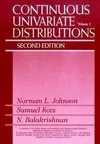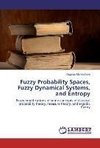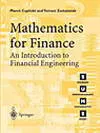
-
 Anglický jazyk
Anglický jazyk
Bayesian statistics
Autor: Source: Wikipedia
Source: Wikipedia. Pages: 83. Chapters: Bayesian probability, Prosecutor's fallacy, Likelihood function, Bayesian inference, Naive Bayes classifier, Bayesian network, Odds ratio, Variational Bayesian methods, Ensemble Kalman filter, Principle of maximum... Viac o knihe
Na objednávku, dodanie 2-4 týždne
20.79 €
bežná cena: 23.10 €
O knihe
Source: Wikipedia. Pages: 83. Chapters: Bayesian probability, Prosecutor's fallacy, Likelihood function, Bayesian inference, Naive Bayes classifier, Bayesian network, Odds ratio, Variational Bayesian methods, Ensemble Kalman filter, Principle of maximum entropy, Bayesian spam filtering, Bayes estimator, Prior probability, Conjugate prior, Checking whether a coin is fair, Bayesian game, Imprecise probability, Data assimilation, Bayesian brain, Bayes factor, Graph cuts in computer vision, Jeffreys prior, Admissible decision rule, De Finetti's theorem, Bayesian inference in phylogeny, Maximum a posteriori estimation, Approximate Bayesian computation, Bayesian experimental design, Graphical model, Bayes linear statistics, Bayesian information criterion, Bayesian linear regression, Hierarchical Bayes model, Nested sampling algorithm, Evidence under Bayes theorem, Reference class problem, Recursive Bayesian estimation, Bayesian multivariate linear regression, Posterior probability, Credible interval, Extrapolation domain analysis, Hyperprior, Leonard Jimmie Savage, Deviance information criterion, AODE, Markov logic network, Bayesian search theory, Random naive Bayes, Bayesian average, A priori, Calibrated probability assessment, Hyperparameter, Gaussian process emulator, Marginal likelihood, GLUE, Aumann's agreement theorem, Precision, Base rate, Cromwell's rule, Speed prior, Bayesian econometrics, Expectation propagation, Strong prior, Sparse binary polynomial hashing, International Society for Bayesian Analysis. Excerpt: Bayesian inference is a method of statistical inference in which evidence is used to estimate parameters and predictions in a probability model. In Bayesian inference, all uncertainty is summarized by a "posterior distribution," which is a probability distribution for all uncertain quantities, given the data and the model. The term "Bayesian" comes from the application of Bayes' theorem to probabilities that specifically have the interpretation as Bayesian probabilities. Such probabilities can themselves be distinguished into objective and subjective probabilities. In practical usage, "Bayesian inference" refers to an iterative process in which collection of fresh evidence repeatedly modifies an initial probability distribution. In each iteration, the initial distribution is called the prior probability, whereas the modified belief is called the posterior probability. Bayesian inference is different from frequentist inference, which uses the sampling distribution of a statistic. Coming to a conclusion about uncertain inferences involves collecting evidence. As evidence accumulates, the degree of confidence in the hypothesis typically tends either high or low. Hypotheses whose confidence level tend high can be accepted, while those whose confidence level tend low can be rejected. This process may be quantified using the Bayesian interpretation of probability as reflecting uncertainty about the parameters and predictions, conditional on the data and model. Without loss of generality, From Bayes' theorem, The terms being interpreted as follows Before any evidence is taken into account, one starts with some belief about , expressed as an initial prior probability. To take evidence into account, Bayes' theorem is applied iteratively; at each stage, the old posterior probability becomes the new prior. To interpret the factor, consider a special case in which theta can take on a discrete set of values. Let H be one of these possib...
- Vydavateľstvo: Books LLC, Reference Series
- Rok vydania: 2015
- Formát: Paperback
- Rozmer: 246 x 189 mm
- Jazyk: Anglický jazyk
- ISBN: 9781156942734












